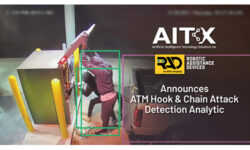Security Systems Integrators Are Missing the Boat on Interoperability
Why does the security industry continue to lag behind in open platforms and how can it push forward?

Find out how interoperability may affect your system designs and integrations.
INTEROPERABILITY and open platforms are widely recognized for the benefits they deliver for information technology (IT). The Internet, networks, cryptography and much of IT is built on a foundation of standards, open platforms and interoperability. The result is the network effect whereby goods and services become more valuable as more people use them. In this definition lies a crucial aspect of interoperability and standards; namely that success is measured not particularly by usability, technical elegance or cost-effectiveness of a solution but by the extent of its adoption and use.
Physical security solutions in comparison are at a disadvantage. There are far fewer security solutions sold than IT systems and the overall market value and the development community is a fraction of the size. However, physical security systems are more and more becoming IT related and the rules for interoperability are increasingly driven by IT. Trying to drive physical security standards not in sync with IT standards is simply a bad strategy, as is developing them in isolation of IT standards and development communities.
Physical security solutions need to do a better job of delivering on interoperability’s benefits. Physical security systems could take advantage of the resulting network effect across the security supply chain. The benefits go to the entire supply chain from solution providers to integrators to end users and back again.
- End users benefit from expanded choice and competition; better performance; more features and functionality; better price-performance ratios; and breaking the physical security acquisition silo. Also, single vendor solutions don’t play well in IT.
- Systems integrators can focus on engineering and integration skills versus multiple product configurations, and in doing so complement their structured cabling, electrical and mechanical skillsets. When IT standards are leveraged the skills acquired help engagement with IT departments and funding.
- Vendors gain from lower pricing and higher performance of components they use, improved security from standards based cryptography, lower training and support costs. Vendors can focus limited development resources on system features and functionality.
To glean the state of interoperability in the security industry – and how it may affect your system designs and integrations – read on to learn about the differences between standards and specifications, as well as a piece-by-piece interoperability perspective on today’s solutions.
Physical security solutions need to do a better job of delivering on interoperability’s benefits. The benefits go to the entire supply chain from solution providers to integrators to end users and back again.
Specifications Vs. Standards
The physical security industry has a mixed record on interoperability and open platforms. The industry has benefited from widely adopted IP-based systems. Most access control systems consist of servers and door controllers that operate on modern IT networks. In many cases they leverage Windows or Linux operating systems and use widely available processors, components, (virtual) servers and databases.
Typically the physical security industry develops specifications – and there is a difference between a specification and a standard. Standards are open to participation with little to no financial barriers or intellectual property barriers. Specifications on the other hand are often developed by a community of vendors, with fees tiered by the level of influence and participation often runs into five-figure dollars at the top level and with varying IP licenses.
Next: Why Security Companies Can Entrust Their Cyber Defense With Managed Service Providers
Standards can consist of very detailed technical specification, but the foundation of the technical requirements is open with very limited restrictions at every step in the process. Another reason physical security specs prevail is due to the lack of vendor breadth and market size. A small number of players can create a specification for the industry. In the case of IT, this is a much harder thing to do and therefore has led to the prevalence of standards.
Standards are developed by accredited standards development organizations (SDOs). Groups such as the ISO (International Organization for Standardization) and IEEE (Institute of Electrical and Electronics Engineers) are general purpose while organizations such as IETF (Internet Engineering Task Force), W3C (World Wide Web Consortium) or OASIS (Organization for the Advancement of Structured Information Standards) among others have more of an IT focus. Physical security organizations such as ASIS Int’l, BICSI and the Security Industry Association (SIA) act as SDOs through ANSI accreditation.
Let’s take a simplified view of physical access control systems (PACS) commonly deployed to see what standards and specifications have been put into play and how they have worked out.
If you enjoyed this article and want to receive more valuable industry content like this, click here to sign up for our FREE digital newsletters!

Security Is Our Business, Too
For professionals who recommend, buy and install all types of electronic security equipment, a free subscription to Commercial Integrator + Security Sales & Integration is like having a consultant on call. You’ll find an ideal balance of technology and business coverage, with installation tips and techniques for products and updates on how to add to your bottom line.
A FREE subscription to the top resource for security and integration industry will prove to be invaluable.







